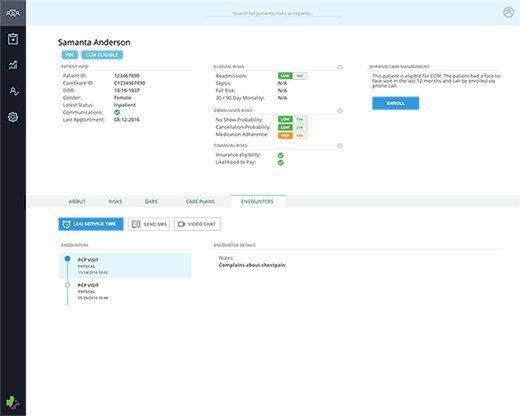Population Health Management Review of Concepts and Definitions
Population health management (PHM) is a subject field within the healthcare industry that studies and facilitates care delivery across the general population or a group of individuals.
An important goal of PHM is to get together, normalize and analyze clinical information beyond a patient's many care settings that can reveal opportunities to ameliorate the patient'southward health and the provider'due south fiscal outcomes. Past merging clinical care with healthcare economics and outcomes assessment, PHM can aid providers, patients and insurers aggregate, exchange and analyze patient data to coordinate care and promote wellness through show-based decision support in clinical care.
Population health management requires technology that supports data aggregation, data governance and data analytics. The technology must also support the reporting capabilities necessary for compliance and provider incentives. In the Us, PHM is typically tied to incentives that require a provider to statistically prove an increase in a given population's wellness.
How PHM works
The chief engineering science that makes PHM possible is business intelligence and data analytics. These technologies are needed because in order to truly achieve the goals of PHM, clinical, fiscal and operational data needs to exist brought together from across the organization every bit well as provide actionable steps for providers via analytics -- including predictive analytics. Effective PHM technologies and programs will provide real-fourth dimension insights, allowing providers to identify and address whatever care gaps within the patient population. This will allow a healthcare arrangement to improve patient outcomes and cost savings.

The goal of PHM
There are several goals PHM programs seek to accomplish.
1 goal is financial improvement. PHM programs aim to mitigate costs by focusing on advisable utilization of services to manage and coordinate care efficiently. PHM programs also seek to mitigate costs by effectively managing and preventing chronic diseases.
Another goal is clinical proficiency. This entails using PHM technologies to identify intendance gaps and as well includes process metrics, such every bit the commitment of intendance services, and outcomes metrics, such equally assessing the health of the patient population. Possessing and analyzing this information allows providers to place the greatest needs of the patient population. For example, if the majority of a patient population is suffering from diabetes and hypertension, PHM technologies can help providers identify these problems.
Finally, another goal of PHM is ameliorate patient engagement. Patient engagement is an important attribute of PHM considering in order to forestall illness and maintain health, patients demand to be motivated to make healthy choices while outside the hospital or healthcare facility.
The benefits of population health direction
The benefits of PHM include giving providers the ability to find care gaps, presenting providers with actionable steps on how to treat a patient or group of patients, and reducing cost for the healthcare organization.
Another benefit of PHM is its crucial role in aiding the American healthcare industry in transitioning over to value-based care or value-based reimbursement. A very important aspect to achieving value-based care is understanding the patient population and knowing the most effective ways to care for them.
PHM take a chance stratification
Chance stratification is the process of dividing a population of patients into groups based on their wellness, lifestyles and their medical histories. Take a chance stratification for PHM involves combining individuals' risk scores, demographics and socioeconomic characteristics, and medical records to create a complete and comprehensive patient contour.
Run a risk stratification is important to PHM considering information technology allows providers to predict and identify patients at risk for infirmary admissions, allows providers to create patient-specific care plans, and helps providers understand their patient population health trends.
PHM data sources
In lodge for PHM to truly be successful and for healthcare to transition to value-based intendance, certain data is needed. At the absolute minimum, this data should include: patient-reported outcomes data, social determinants of health data, claims information and action-based data.
Bachelor real-time clinical data would be even more ideal in boosting the effectiveness of PHM.
This was final updated in June 2017
Go on Reading About population health management (PHM)
- The link between successful population health and analytics
- Manage the multifariousness of available population wellness tools
- A case study of a population health platform
- Experts share their thoughts on population health
Dig Deeper on Healthcare IT systems and applications
-

Dialysis lab uses SambaNova, DeLorean AI for renal care
-

With the onset of value-based care, machine learning is making its mark
-

Car learning methods in EHR show promise, with limits
-

Population health strategies benefit from advanced analytics
Source: https://www.techtarget.com/searchhealthit/definition/Population-health-management-PHM




0 Response to "Population Health Management Review of Concepts and Definitions"
Post a Comment